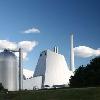|
|
 | KPMG REPORT SHOWS DEALMAKER INTEREST IN BIOMASS POWER |  In "Powering Ahead 2010: An Outlook for Renewable Energy M&A," KPMG recognizes that 2010 may just be the year for biomass. KPMG Partner Andy Cox summarized the results in this way: "Perhaps the most surprising finding is that survey respondents are now seeing biomass as a serious contender for investment alongside solar and wind. While biomass lags behind wind and solar in terms of maturity, there are certainly attractive factors in its favour-not least its potential to generate greater returns than wind. Although there is no doubt solar and wind will continue to drive deal activity, our research suggests that from a global perspective, biomass too, will play a significant role in investment growth."
KPMG has been conducting a survey since 2008. This year, they surveyed more than 250 senior executives in the renewable energy industry worldwide, including corporations, financial investors, debt providers, government bodies and service providers. The surveys were followed up by in-depth interviews with seven of the respondents. |
 |
CARBON DEBTS & DIVIDENDS |
"Biomass Sustainability and Carbon Policy Study"
by the Manomet Center for Conservation Sciences
Despite the controversy surrounding the report on biomass carbon science released by the Manomet Center for Conservation Sciences, the report adds a new way of looking at carbon life cycle issues for energy sources.
The view of the life cycle in the study is based on a process that starts with a carbon debt (combusting biomass or fossil fuel emits GHGs), progresses through carbon recovery (the sequestration of carbon by forests) to a period after the carbon debt is paid and carbon dividends begin to accrue.
This process can most clearly be seen in the Figure 1, which appears in the study on page 6. The graph represents a hypothetical example developed solely to demonstrate the process for understanding the life cycle carbon emissions of biomass compared to fossil fuels.
|
 |
EXERCISE CAUTION |
Manomet Center Warns Readers Not to Generalize Too Widely
If you haven't read the Manomet Center for Conservation Sciences " Biomass Sustainability and Carbon Policy Study" yet, you may want to start by turning to page 113, the next-to-last page of the study. On this page, the Manomet Center lays out its final considerations. In this section, the Center writes extensively on the caveats that come along with the study. The gist of these caveats: Don't generalize this study too widely. Here is the rundown on the applicability of this study beyond Massachusetts:
|
 |
FROM THE EDITOR: | |
It's Time for a Long-Term Energy Plan
Controversy erupted last week with the publication of a report prepared by the Manomet Center for Conservation Sciences for the Commonwealth of Massachusetts. The report, some say, leaves the impression that the carbon footprint of biomass electricity is worse than that of energy produced by oil and coal. As biomass has almost universally been considered carbon neutral to this point, this statement has raised more than a few eyebrows--and voices. The Biomass Power Association (BPA), for instance, has requested a correction of misinformation contained in the report. Environmental groups will no doubt pick up some of the conclusions reached in the report and use them to oppose biomass power plants going forward.
As the BPA points out, 110 pages into the report, the Manomet Center finally confirms what we all knew: "All bioenergy technologies, even biomass electric power compared to natural gas electric [the next cleanest technology], looks favorable when biomass waste wood is compared to fossil fuel alternatives."
|
 |
PETE STEWART QUOTED IN BIOMASS MAGAZINE | |
With less than a decade left for European Union member countries to produce 20% of power generation from renewable resources, the demand for North American woody biomass from those countries has started in earnest. Written by Lisa Gibson and published in Biomass Magazine, "Bridging the Global Supply/Demand Gap" covers the dynamic created by underutilization of woody biomass in the US domestic market and the limited supply and high land-based transportation costs of woody biomass in most of the EU.
"I do think there's such an incredible demand in Europe that there's going to be biomass wood chip and pellet export opportunities, and it's going to grow over the next five to ten years," says Pete Stewart, President and CEO of Forest2Market.
|
 |
BIOLINKS | |
The Environmental Protection Agency (EPA) proposed new Boiler Maximum Achievable Control Technology (MACT) standards which would classify biomass boiler units, conventionally considered multi-fuel boilers, as incinerators and would be subject to new emission limits for mercury, hydrogen chloride, particulate matter, carbon monoxide and dioxin. The new proposed ruling is originally part of the Clean Air Act of 1990. The Biomass Power Association (BPA) says that early estimates have shown that it could cost the biomass industry up to $7 billion to comply with EPA's new standards. The comment period on this rule expires on July 19. View a fact sheet about the rule with details about how to comment on the proposed rule. The Forest Guild Biomass Working Group released Guidelines for Forest Biomass Retention and Harvesting in the Northeast in May. As the biomass market matures, guidelines like these are being formulated by more and more states. Read the guidelines here. A new report by the University of Tennessee finds the state of the wood to energy industry healthy and full of promise. "Wood2Energy: A State of the Science and Technology Report" looks at the biomass supply in both the US and Canada, current harvesting and transportation technologies, pretreatment and conversion technologies and the market impacts of broad-scale woody biomass utilitization. Read the report here. |
|
|
|
|